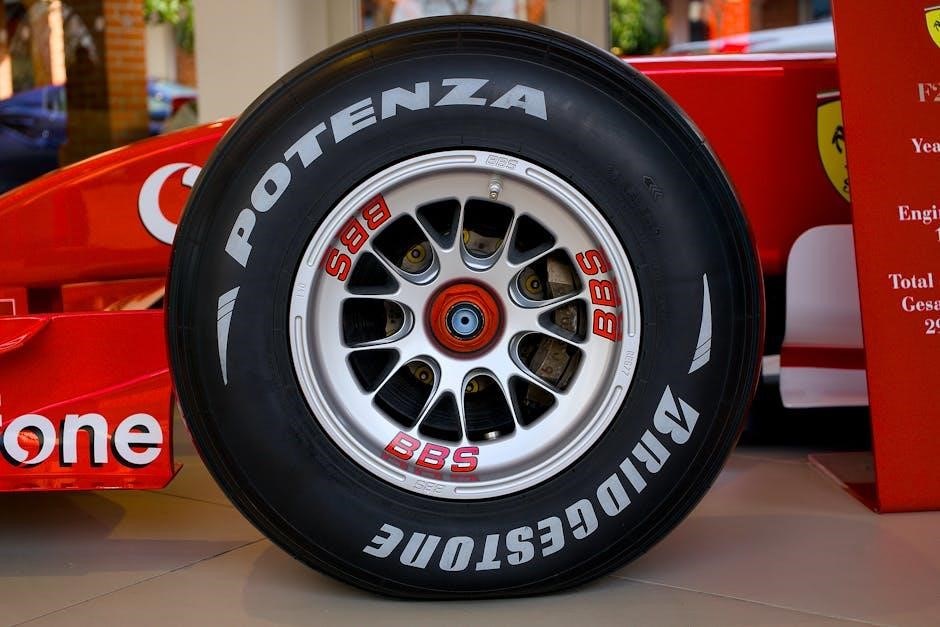ASME Section VIII Division 1: An Overview
ASME Section VIII Division 1 provides rules for pressure vessel construction, covering design, fabrication, inspection, and testing. It applies to vessels operating at pressures exceeding 15 psig, outlining mandatory requirements and nonmandatory guidance for various aspects of vessel creation.
Scope and Application of Division 1
ASME Section VIII, Division 1, sets forth rules for constructing pressure vessels, encompassing design, fabrication, inspection, and testing. It’s applicable to vessels operating at internal or external pressures exceeding 15 psig, addressing a broad spectrum of industrial and commercial uses, from small compressed air receivers to extensive petrochemical vessels. The code provides mandatory requirements, prohibitions, and nonmandatory guidance on materials, design considerations, fabrication methods, inspection protocols, testing procedures, markings, reports, overpressure protection, and certification processes.
It is important to note that the ASME code is a safety code, not a purchase specification, and does not define all criteria for specific applications.

Key Aspects of ASME Section VIII Division 1
Key aspects include material specifications, design principles, fabrication techniques, welding procedures, and inspection and testing protocols. These elements ensure pressure vessel safety and compliance within defined operational parameters and code regulations.
Materials Requirements
ASME Section VIII Division 1 specifies acceptable materials for pressure vessel construction, focusing on their mechanical properties and suitability for intended service conditions. These requirements encompass various materials, including carbon steel, stainless steel, and non-ferrous alloys, each with specific allowable stress values. The code dictates material traceability and certification to ensure quality control throughout the manufacturing process. It also addresses the use of materials at elevated temperatures, considering creep and stress rupture properties.
Furthermore, the code outlines testing requirements for materials, such as tensile and impact testing, to verify their conformance to specified standards. Material selection must account for factors like corrosion resistance, weldability, and compatibility with the intended process fluids. Compliance with these stringent material requirements is crucial for ensuring the structural integrity and long-term reliability of pressure vessels. The ASME code provides detailed tables and guidelines for selecting appropriate materials based on design parameters and operating conditions.
Design Considerations
ASME Section VIII Division 1 mandates careful design considerations for pressure vessels to ensure safe and reliable operation. These considerations encompass factors like internal and external pressure, temperature, and applied loads. The code provides formulas and guidelines for calculating minimum required thicknesses for vessel components, including shells, heads, and nozzles, based on material properties and design pressure. Stress analysis is a critical aspect, addressing primary, secondary, and peak stresses to prevent failure.
Furthermore, design must account for corrosion allowance, fatigue analysis, and the effects of cyclic loading. Nozzle reinforcement is essential to compensate for the weakening effect of openings in the vessel shell. The code also specifies requirements for supports and attachments to ensure structural stability. Proper design is crucial for preventing catastrophic failures and ensuring the long-term integrity of pressure vessels in various industrial applications. Considerations include selecting appropriate design margins and applying relevant code cases.
Fabrication and Welding
ASME Section VIII Division 1 places significant emphasis on fabrication and welding processes to ensure the structural integrity of pressure vessels. The code specifies requirements for material preparation, forming, and joining techniques. Welding procedures must be qualified according to ASME Section IX, ensuring that welds possess the required strength and ductility. Qualified welders are essential for performing welding operations.
The code outlines specific welding requirements for different materials and joint configurations, including preheating, interpass temperature control, and post-weld heat treatment. Fabrication tolerances are defined to maintain dimensional accuracy. Non-destructive examination (NDE) methods, such as radiography and ultrasonic testing, are employed to detect weld defects. Proper fabrication and welding practices are crucial for preventing leaks, cracks, and other failures that can compromise the safety of pressure vessels. The code dictates stringent controls on welding consumables and techniques for dissimilar metal welds.
Inspection and Testing Procedures
ASME Section VIII Division 1 mandates rigorous inspection and testing procedures to verify the integrity of pressure vessels; These procedures encompass various stages, from material receipt to final acceptance. Visual inspection is performed throughout the fabrication process to identify surface defects and ensure compliance with dimensional requirements. Non-destructive examination (NDE) methods, such as radiography, ultrasonic testing, and magnetic particle testing, are employed to detect subsurface flaws in welds and base materials.
Pressure testing, typically hydrostatic testing, is conducted to validate the vessel’s ability to withstand design pressures. Acceptance criteria are defined for each inspection and testing method. Qualified personnel must perform inspections and testing, and detailed records must be maintained. The code specifies requirements for test pressures, holding times, and examination techniques. These comprehensive inspection and testing protocols help ensure the safe operation of pressure vessels.

Certification and Documentation
ASME Section VIII Division 1 requires thorough certification and documentation. This includes proper markings on the vessel, and the generation of detailed reports. These steps ensure traceability and demonstrate compliance with the code’s requirements.
Markings and Reports
ASME Section VIII, Division 1 mandates specific markings on pressure vessels to clearly indicate compliance and essential information. These markings serve as a permanent record of the vessel’s design parameters, manufacturing details, and the ASME stamp, signifying adherence to the code’s stringent requirements. Proper marking ensures traceability throughout the vessel’s lifespan, facilitating inspections and maintenance.
Furthermore, comprehensive reports are crucial for documenting the entire fabrication process. These reports encompass material certifications, welding procedures, inspection records, and testing results. Detailed documentation provides evidence of conformity to the specified design and construction standards. Accurate and readily available reports are essential for regulatory compliance, quality assurance, and future reference during vessel operation and maintenance. The combination of clear markings and thorough reports ensures the integrity and safety of pressure vessels built according to ASME Section VIII, Division 1.

Resources and Guidance
Several resources aid in understanding ASME Section VIII, Division 1. These include guidebooks offering explanations and examples, as well as problem manuals providing practical application scenarios for engineers and designers working with pressure vessels.
CASTI Guidebook to ASME Section VIII Div. 1
The CASTI Guidebook to ASME Section VIII Division 1 serves as a valuable resource for understanding pressure vessel construction. It offers detailed explanations and practical examples, addressing the complexities of the ASME code. The guidebook provides insights into the history of boiler and pressure vessel codes, covering scope, materials, design considerations, and user responsibilities. It also emphasizes the importance of adhering to standards, specifically focusing on pressure vessels.
Furthermore, the CASTI Guidebook delves into material selection, design analysis, fabrication techniques, inspection procedures, and testing protocols. It is designed to assist engineers and designers in navigating the intricacies of Section VIII Division 1, ensuring compliance with safety standards and regulatory requirements. The guidebook acts as a supplement to the ASME code, offering additional clarity and practical guidance for effective pressure vessel design and construction.
ASME PTB-4-2021 Example Problem Manual
The ASME PTB-4-2021 Example Problem Manual is a resource for those working with ASME Section VIII Division 1. It provides practical examples that assist in understanding and applying the code’s requirements for pressure vessel design and construction. This manual is designed to supplement the code by offering clear solutions to common problems encountered in the field. The problems included cover a range of topics, such as material selection, stress analysis, and welding.
This manual serves as a tool for engineers, designers, and inspectors to enhance their understanding of ASME Section VIII Division 1. It is updated to reflect the latest code revisions, ensuring that users have access to the most current information. The ASME PTB-4-2021 Example Problem Manual is intended to aid in achieving compliance with the code and promoting safety in pressure vessel applications.

Amendments and Updates
ASME Section VIII, Division 1 undergoes regular updates and amendments to reflect the latest technological advancements, safety considerations, and industry best practices. These revisions ensure the code remains current and effective.
Regular Updates and Editions
ASME Section VIII Division 1 is not a static document; it evolves through regular updates and editions to incorporate advancements in materials science, fabrication techniques, and safety protocols. These updates are crucial for maintaining the code’s relevance and effectiveness in ensuring pressure vessel safety. Published every two years, these revisions include both mandatory requirements and non-mandatory guidance, reflecting the continuous improvement approach of ASME.
Staying current with these changes is essential for engineers, manufacturers, and inspectors involved in pressure vessel design and construction. Each new edition may introduce changes to design formulas, material specifications, welding procedures, and inspection methods, all impacting compliance and safety. Accessing the latest edition and understanding its implications are vital for adhering to the most up-to-date industry standards and regulatory requirements. Furthermore, understanding the history of these updates provides context for current practices.




